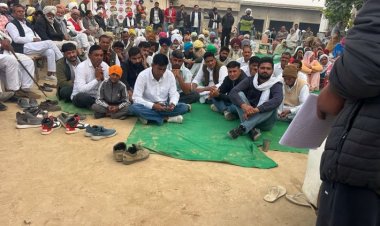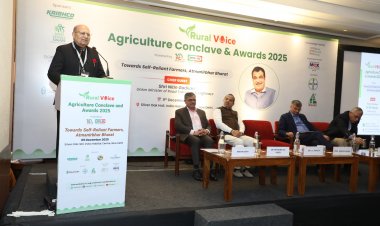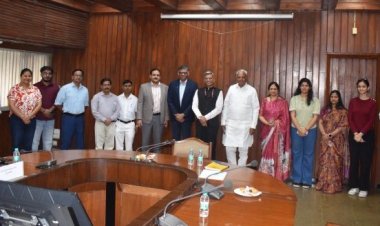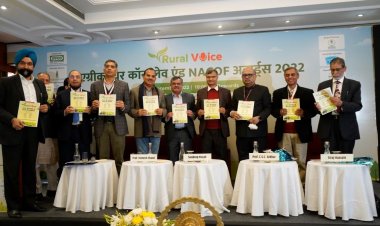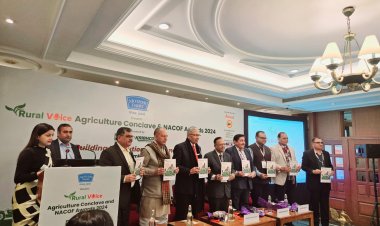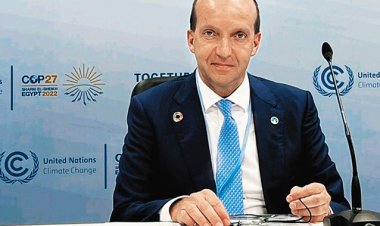Agenda for Rural India: Aspirations Of New Rural India
Rural Voice, a sister publication of Rural World and Socratus, an NGO, did the extraordinary: it went to rural areas and listened! It did a detailed exercise in mapping the aspirations of the people in five centres each representing a different geographical region of India. Presented in a nutshell, this represents a snapshot of the concerns, priorities and aspirations of the majority of Indians and a vision for the future. For the government and for policy makers, this presents a template for redesigning rural development and addressing the issues of an aspirational rural India.
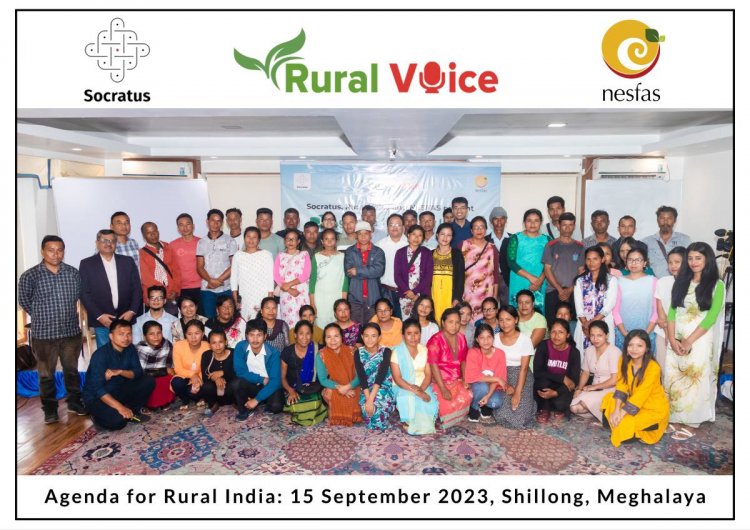
Rural Voice, a sister publication of Rural World and Socratus, an NGO, did the extraordinary: it went to rural areas and listened! It did a detailed exercise in mapping the aspirations of the people in five centres each representing a different geographical region of India. Presented in a nutshell, this represents a snapshot of the concerns, priorities and aspirations of the majority of Indians and a vision for the future. For the government and for policy makers, this presents a template for redesigning rural development and addressing the issues of an aspirational rural India.
While the issues have been outlined by the organisers under different heads of development, climate & environment and political economy, what stands out as common themes are the following: most rural areas want less use of fertilisers and pesticides, better markets and prices for their produce, a solution to the man- animal conflict, especially with reference to stray animals, much better focus on better education and health, and more effort in protecting the environment, particularly in terms of water and air. While these issues have been articulated time and again in different fora, it is probably the first time that they have been put together in a compact, actionable format.
The common refrain from rural India seems to be the tall poll promises and their lack of implementation. It’s no wonder then that rural India seems to be disappointed with politicians and their poll promises. They seem to realise that these are what they are: just promises (jhumlas). This perception needs to be changed if rural India is to become prosperous, healthy and peaceful. Disappointment with the government could result in social unrest paving the way for extremism which is detrimental to the overall progress of the nation.
Government has been aware of most of these problems that plague rural India. They made efforts to address these problems at various times have been through multiple schemes like MGNREGA, Swatch Bharat, Rural Drinking Water Mission ( Jal Shakti) , Rural Electrification , PM Kisan, Aspirational District(now Block) Program, Mid-day Meals, Public Distribution System, ICDS et cetera. These did cover a lot of ground in terms of improving the incomes and lives of rural Indians. Most of these schemes have delivered positive results in terms of achieving the outcomes they set out to do. However, aspirational rural India expects more, and faster delivery of programs which visibly improve the lives of the poor. From this perspective, a whole new approach of integrating some of the schemes and converging the interventions at the village and the block levels is required.
The ministry of rural development has been, ever since its creation, designing and implementing rural development and anti-poverty programs with substantially higher outlays. These include some of the flagship programs like IRDPand its later avatars, MGNREGA, PMGSY, et cetera. There are major programs which impact rural India designed and managed by other ministries like Health, Drinking Water and Sanitation, Agriculture, Animal Husbandry, Dairy and Fisheries, Panchayati Raj, Water Resources et cetera. These programs are vertically driven by line Ministries and implemented at the district and block levels. These are monitored centrally and at the state level by the respective agencies who implement these programs.
However, the ministry of Rural Development does not seem to have a comprehensive idea of all the rural development programs and their cumulative impact on the rural population. Measurement of outcomes and assessment of impacts remain a challenge from a larger development perspective. One of the things that the Government needs to do is to give the Rural development department a much larger role in planning and monitoring of all rural programs, almost parallel to the role of Niti Aayog with a specific coordinating responsibility in terms of the programs being grounded at the block and district levels . This requires a planning and monitoring function embedded in the Rural Development Ministry.
Given the hierarchical nature of governance at the Ministerial and Secretary levels in the central ministries, this needs a different design of a coordinating authority embedded in the rural development ministry. The time-tested coordinating committee or an empowered group of ministers is unlikely to produce results. While the line ministries should be free to design programs, as per national priorities, the convergence of these programs at the implementation level and the monitoring of outcomes should be entrusted to this new coordinating authority. A similar authority should also be found at the state level. Effective implementation of most of the central programs depends on effective governance at the state and district level. The district has become the key administrative unit in implementation of most developmental programs.
However, the institution of the District Collector still retains the structure and character of the old Revenue and Law and Order System. Experiments with the creation of a district development commissioner at the district level and a Zila Parishad (District Council) system have not had the desired impact. The state governments have been, by large, hesitant to delegate its role and functions to any district level organisation, be it, elected, or otherwise. Except for one or two states, the district level Panchayati Raj (Zila Parishad) experiment has not had many successes to its credit.
In modern times, given the technological prowess driving development, and given the importance of private sector participation, the model of governance at the district level needs a redesign in terms of its scope, power and responsibilities. While planning should remain the concern of elected representatives, implementation has to be the responsibility of the executive. The monitoring of development has to be done differently and scop[e for corrective action embedded in the schemes themselves. The office of the district collector with its current staffing norms will not be able to meet the challenges of an aspirational India. This office needs serious redesign and strengthening with a set of young tech savvy management professionals to support the district collector. The Collector should also be freed from many of the routine committees and meetings which take a toll on her productive time. Redesign of the role and functions of the district collector is urgently called for if meaningful rural development has to be achieved.
The block development office which Is the fulcrum of rural development was originally conceived in the community development agenda of the erstwhile Planning Commission. This office is probably the most reviewed, supervised and monitored office in the entire administrative hierarchy. Skills and support systems remain the same, the burden that this office is expected to carry is enormous. No wonder then, that achievement of targets, whichever way, becomes the priority. In the implementation hierarchy the block development officer is the most important in terms of functions and responsibilities, but probably the weakest in terms of skills and support systems. The centre and the state governments have made often made inadequate and ad hoc efforts to address this deficiency, but have not made any serious attempt to redesign the functional architecture of the block development office. Nor have they invested adequately in training these officersvin implementation practices or in technology.
The block development office of today most often is a representative of the past rather than an office of the future . States which have experimented with delegation of more functions and responsibilities to the Panchayats as envisaged in the 71 st constitutional amendment have had better outcomes to report than those who were slow in empowering Panchayats. Many states did a pro forma delegation of powers to Panchayats without actually empowering them with any skill or financial powers. One of the most important steps that needs to be taken to achieve a faster rural development is to empower the panchayats to design, plan and implement locally appropriate schemes with the best technical support available. Inability of the state to allocate untied resources to panchayats, in spite of Finance Commission grants, and help them achieve better results, has remained the bane of effective rural development. A five-year investment program, involving skill development, technology, upgrades, management orientation, reporting and monitoring systems coupled with higher devolution of funds and continuing guidance for its utilisation is the first step to change the rural scenario in a shorter time.
There are, of course, issues of policy at the national level which needs to take care of the aspirations relating to policies around agriculture, livestock and fisheries ,incentives for chemical fertilisers, promotion of natural & organic farming ,linking rural markets to urban demand centres , investment in rural areas for processing agriculture produce, investment in rural infrastructure and policies relating to climate and environment. The new Multi-Dimensional Poverty Index captures most of these issues: what is required is a comprehensive action plan.
The most Important part of any people friendly and people focused scheme is the ability of the government at various levels to listen carefully to what the people have to say. This effort by Rural Voice is a small but important step in understanding the problems and the aspirations of rural India. Government would be well advised to use such non-formal platforms to listen to multiple voices to understand the problems and aspirations to design people-friendly policies.
(The author is former Secretary, Ministry of Food and Agriculture, Government of India and former Chairman, NDDB)



 Join the RuralVoice whatsapp group
Join the RuralVoice whatsapp group


















